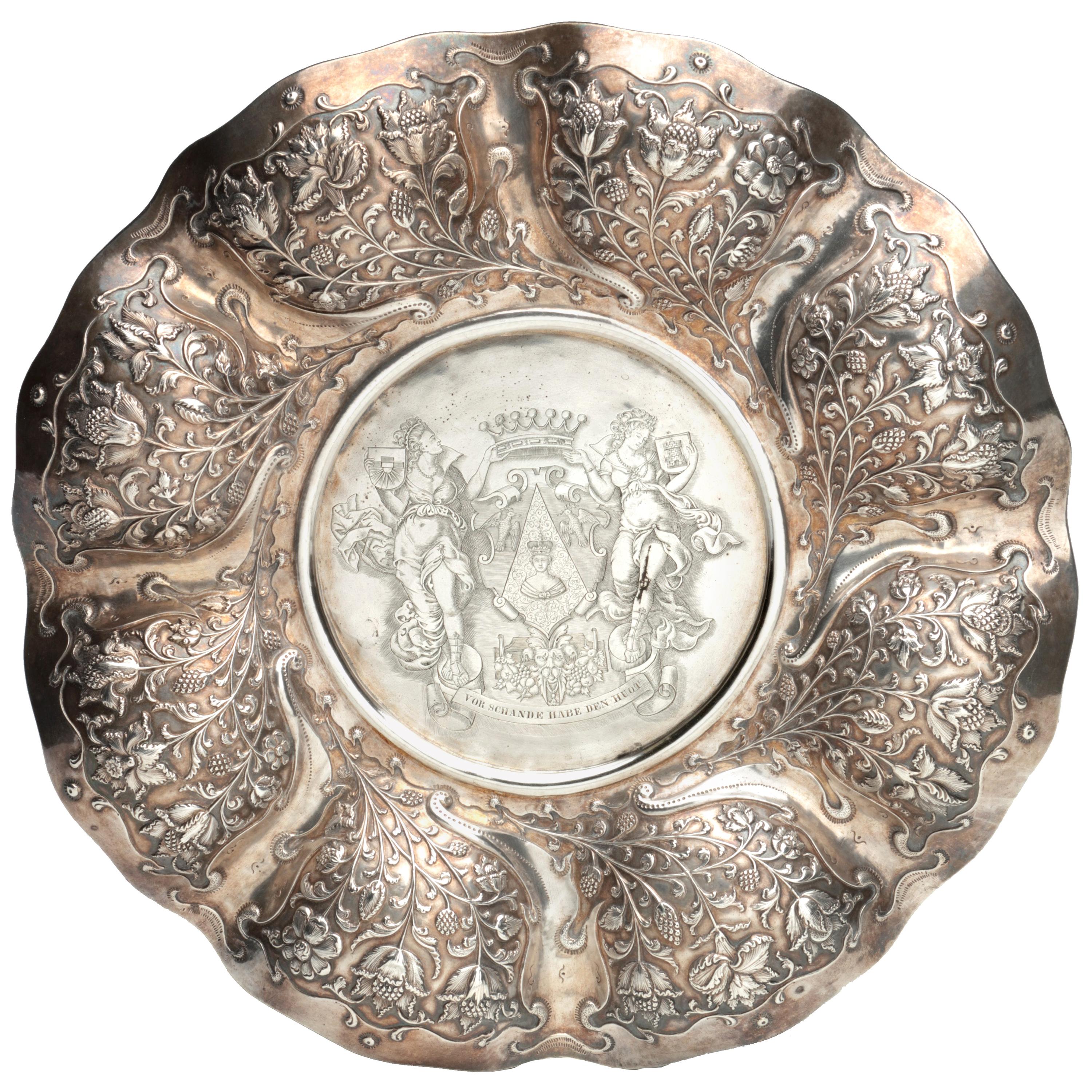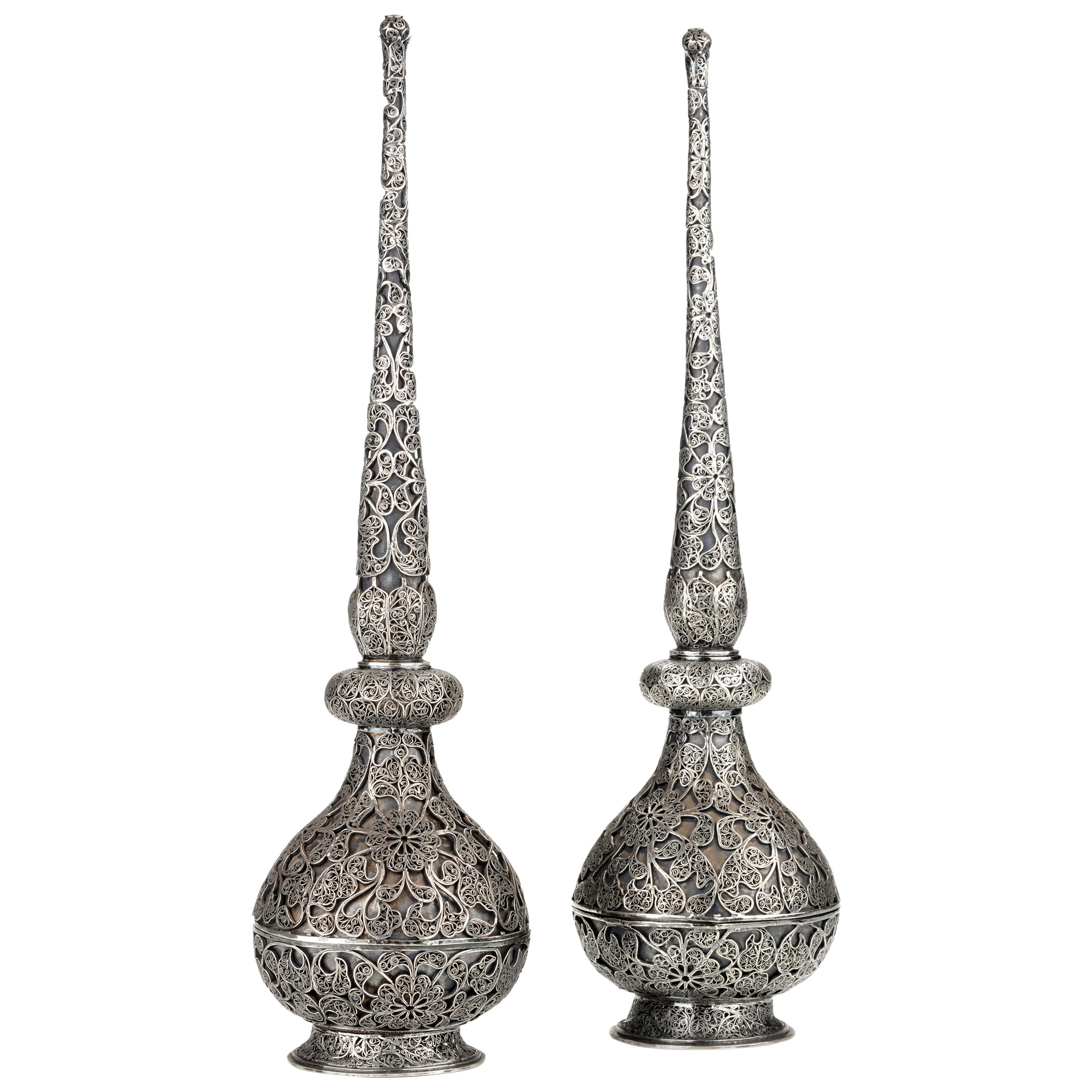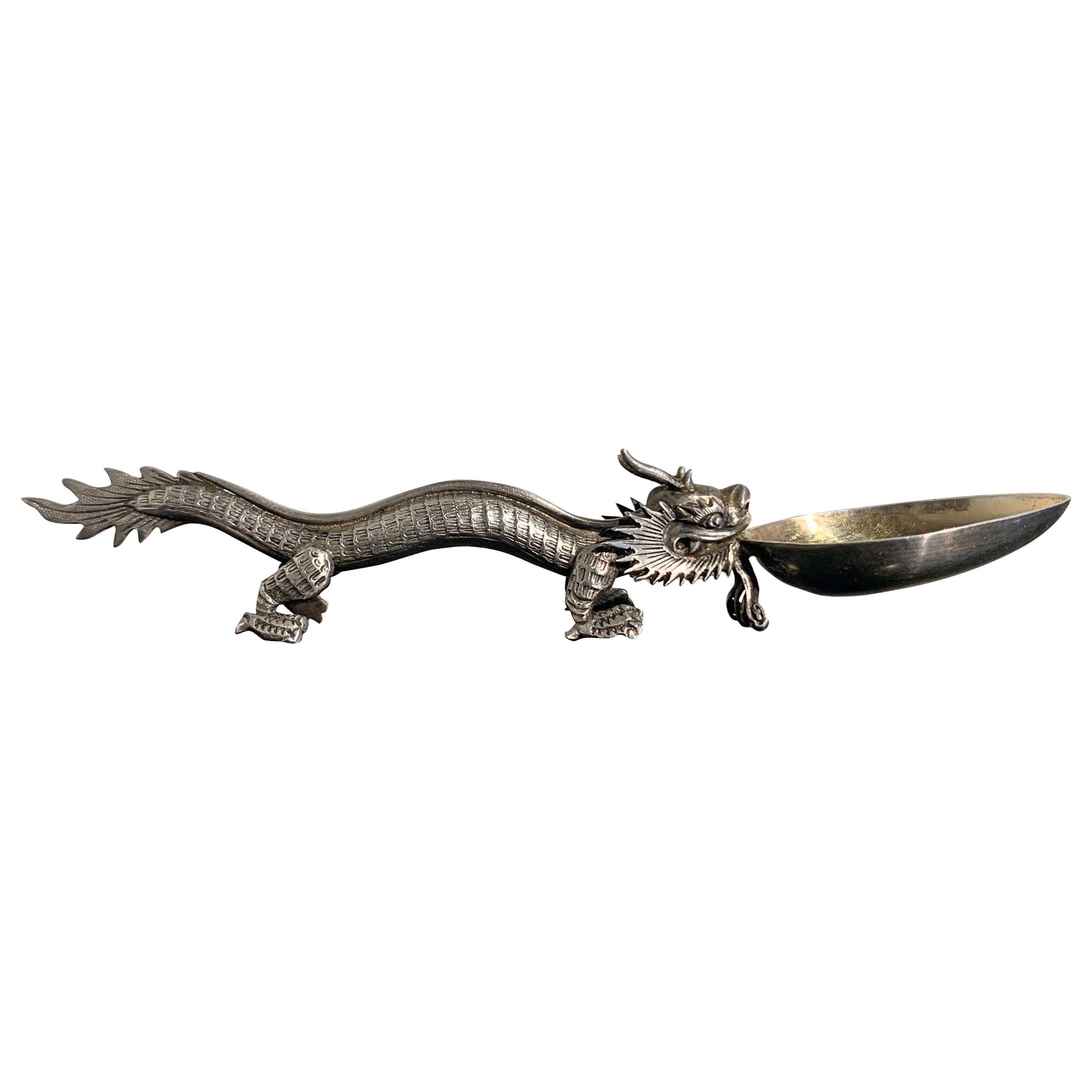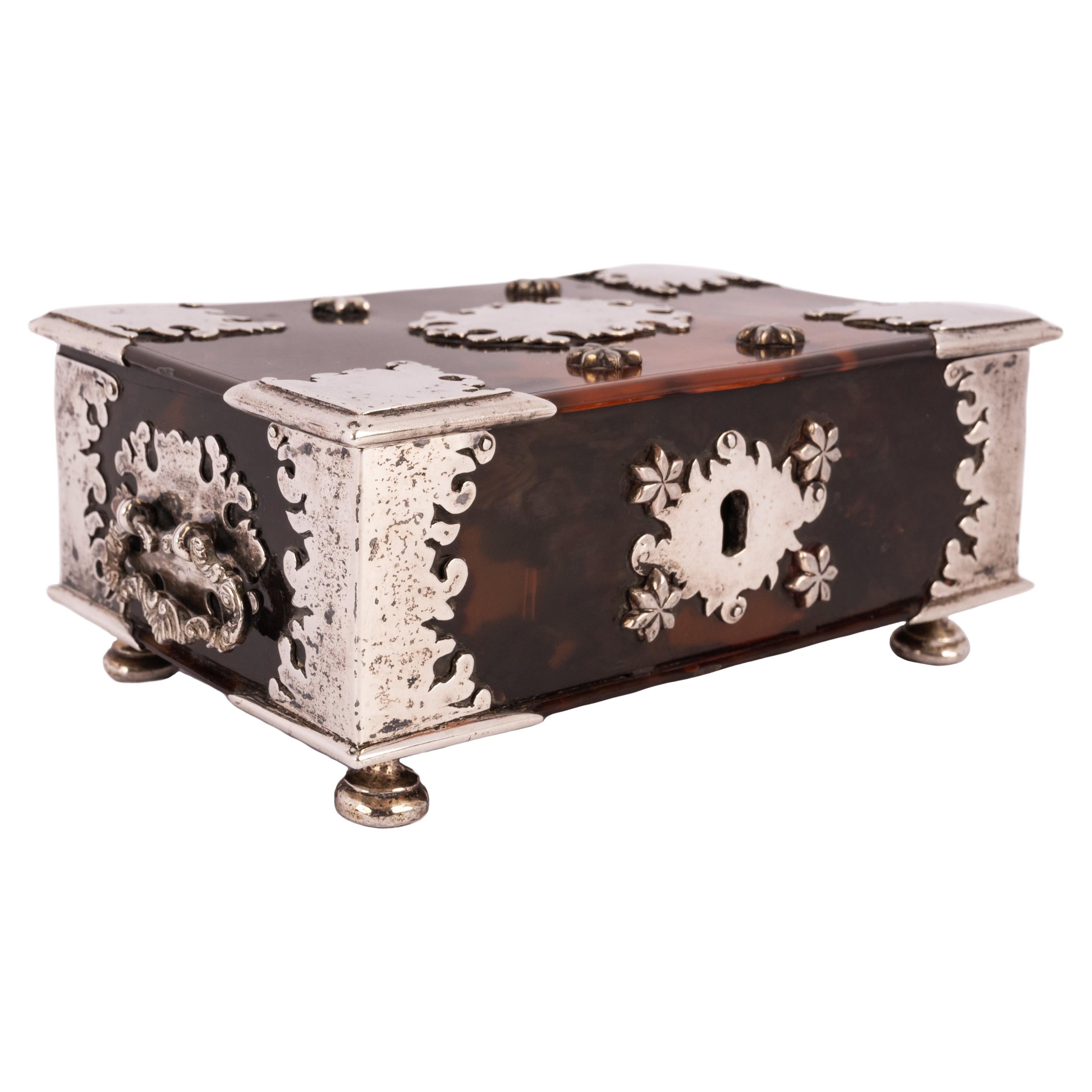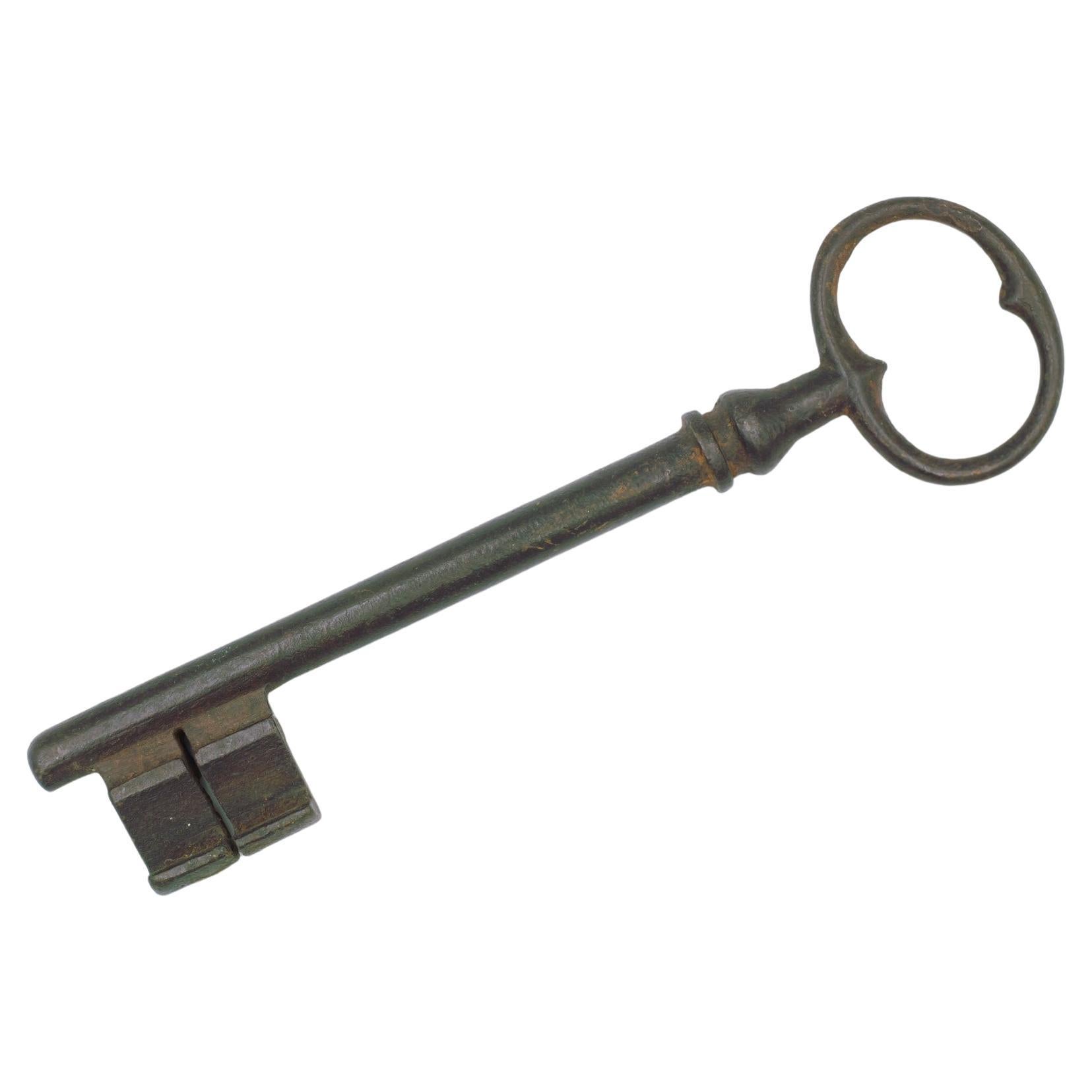Items Similar to Splendid and Heavy Late 17th Century Dutch-Colonial Silver Filigree Salver
Want more images or videos?
Request additional images or videos from the seller
1 of 12
Splendid and Heavy Late 17th Century Dutch-Colonial Silver Filigree Salver
About the Item
A splendid and heavy Dutch-colonial silver filigree salver
Indonesia, Batavia (Jakarta) or possibly Padang, West Sumatra, 2nd half 17th century
Diam. 22.9 cm
Weight 551 grams
This filigree-work was probably done by Chinese masters working in Southeast Asia. Because in style, it is very similar to the famous filigree writing box with the arms of Stadholder William III (dated before 1689), which was collected by Tsar Peter the Great, now in the Hermitage Museum St. Petersburg. Indonesia is the most likely place for this salver to have been made. In the second half of the seventeenth-century silver filigree came into fashion at the European courts. Much of it was imported by the VOC in Amsterdam where Amalia van Solms, her grandson William III and representatives of many royal and noble houses such as Louis XIV, Peter the Great, the German Electors and the Danish Kings greedily collected filigree from the East.
- Dimensions:Height: 0.79 in (2 cm)Diameter: 9.02 in (22.9 cm)
- Style:Dutch Colonial (Of the Period)
- Materials and Techniques:
- Place of Origin:
- Period:
- Date of Manufacture:2nd half 17th century
- Condition:Wear consistent with age and use.
- Seller Location:Amsterdam, NL
- Reference Number:1stDibs: LU5458233868252
About the Seller
5.0
Vetted Seller
These experienced sellers undergo a comprehensive evaluation by our team of in-house experts.
Established in 1985
1stDibs seller since 2020
19 sales on 1stDibs
Typical response time: 3 hours
- ShippingRetrieving quote...Ships From: Amsterdam, Netherlands
- Return PolicyA return for this item may be initiated within 7 days of delivery.
More From This SellerView All
- Dutch Colonial Silver Dish with the Von Pfeffel Coat-of-arms, 17th CenturyLocated in Amsterdam, NLAn unusual Indonesian lobbed silver dish Jakarta (Batavia) or Coromandel coast, third quarter 17th century, apparently unmarked The eight lobbed dish exuberantly decorated with floral motifs, with the middle section replaced, consisting of indistinctly marked German silver from the early 19th century, bearing the coat-of-arms of the Von Pfeffel family. Diam. 30.5 cm Weight 461 grams Note: Lobbed silver dishes with exuberant floral decorations were characteristic of the decorative arts in the Netherlands in the first half of the 17th century. This style of floral decoration was adopted by silversmiths as well as by furniture makers working on the Coromandel Coast and in Batavia, often by workers who had fled the Coromandel Coast because of war and famine. In Batavia this style was known as “Custwerck” (work from the Bengal coast). These lobbed dishes are seldom marked. Only after 1667 the use of the town mark became obligatory in Batavia but only for silver made in Batavia not for silver imported in Batavia from other VOC settlements. The engraved coat of arms in the centre is a replacement of the original centre. The coat of arms can be identified as those of Christian Hubert von Pfeffel (1765- 1834). As a diplomat, statesman, ambassador of Bavaria in London and Saxony and councillor to the King of Bavaria, he was made “Freiherr” in 1828 and since then used this coat of arms. His son Karl Maximilian Friederich Hubert Freiherr von Pfeffel (1811-1890) in 1836 married Karoline Adelheid Pauline von Rottenburg (1805-1872), the natural daughter of Prins Paul von Württemberg (1785-1852) and his mistress Margrethe Porth. Paul was the jounger brother of the King Wilhelm I of Württemberg (1781-1864). The heraldic motto of the von Pfeffels Vur Schande habe den Huot means as much as “Beware of Shame”. Christian Hubert Theodoor Marie Karl von Pfeffel Karl Maximilian’s grandson was the last male in the von Pfeffel line. His daughter, Marie Louise (Paris in 1882 - Cornwall 1944), born and grown-up in France, changed her name in de Pfeffel. She was the great grandmother of Boris Alexander de Pfeffel Johnson, the present British Secretary of State. None of the members of the von Pfeffel family had any direct links with the Dutch East Indies but indirectly by way of the Royal House of Württemberg they did. Sophia Frederika Mathilda von Württemberg (1818-1877), daughter of Wilhelm I King of Württemberg, in 1839 married Willem III...Category
Antique Late 17th Century Indonesian Dutch Colonial Sterling Silver
MaterialsSilver
- Pair of Fine Islamic Silver Filigree Rosewater Sprinklers, Early 18th CenturyLocated in Amsterdam, NLA pair of very fine silver filigree rosewater sprinklers Possibly India, Karimnagar, early 18th century Height 31.6 cm and 31.7 cm, weight 39...Category
Antique Early 18th Century Indian Islamic Metalwork
MaterialsSilver
- Fine 17th Century Dutch Colonial Armorial Tortoiseshell & Silver Box, Dated 1691Located in Amsterdam, NLA dutch tortoiseshell box with two engraved silver plaques Amsterdam, 1691, with maker's mark of Steven des Rousseaux (1654-1733) H. 5 cm Diam. 12.5 cm Note: Steven des ...Category
Antique 17th Century Dutch Sterling Silver
MaterialsSterling Silver
- Dutch Colonial Indonesian Hardwood Four Chair-Back Settee, Late 17th CenturyLocated in Amsterdam, NLAn Indonesian Javanese rosewood (sono keeling) four chair-back settee Java, probably Jakarta (Batavia), late 17th century The massive bench on ten turned connected legs, with four back-splats with cane. Measures: H. 108 x W. 216 x D. 71 cm Seat height approx. 48 cm Note: Batavian chairs and settees of this type were based on the medallion caneback chairs...Category
Antique Early 18th Century Indonesian Dutch Colonial Furniture
MaterialsCane, Hardwood
- Rare 17th Century Silver Reliquary Arm MonstranceLocated in Amsterdam, NLA rare silver reliquary arm with relic bone, with the coat-of-arms of Cosme Roger (1671-1710), bishop of Lombez, France, with original bone relic Poss...Category
Antique Late 17th Century Italian Renaissance Religious Items
MaterialsSterling Silver
- Fabulous Indonesian Yogya-Silver PlateLocated in Amsterdam, NLAn Indonesian Yogya-silver plate Yogyakarta or Kotagede, 1935-1940, marked, (alloy) 800 and maker’s mark PH (Prawirohardjo, act. from 1935) Diam. 27.2 cm Weight 454 grams Th...Category
Early 20th Century Indonesian Art Deco Sterling Silver
MaterialsSilver
You May Also Like
- Chinese Export Silver Dragon Spoon by Wang Hing & Co., Late 19th CenturyBy Wang Hing & Co.Located in Austin, TXA very fine and charming Chinese export silver spoon in the form of a dragon, by Wang Hing & Co., Qing Dynasty, late 19th century, China. ...Category
Antique 1890s Chinese Chinese Export Metalwork
MaterialsSilver
- Antique Dutch Colonial VOC Batavian Tortoise Shell Silver Sirih Casket 1750Located in Portland, ORA rare, Dutch Colonial, Batavian (now Jakarta) Dutch East Indies silver and tortoise shell Sirih casket, circa 1750. The casket was used for storing highly prized betel nut, which was chewed ritually by high ranking Indonesian officials and adopted by settlers from the Dutch East Indies Company...Category
Antique 1750s Indonesian Dutch Colonial Metalwork
MaterialsSilver
- Peranakan Chinese Export Silver Tankard with Dragon Handle, 19th CenturyLocated in Austin, TXA heavy and well cast Chinese export silver tankard with a dragon handle, made of the Southeast Asian market, mid-late 19th century, China. The double walled mug or tankard featur...Category
Antique Late 19th Century Chinese Chinese Export Sterling Silver
MaterialsSilver
- Big Antique 17th century keyLocated in Chonburi, THThis Antique 17th-century wrought iron key is a fascinating artifact that transports us back to an era of intricate craftsmanship and timeless elegance. T...Category
Antique 17th Century Dutch Metalwork
MaterialsWrought Iron
- Chinese Export Silver Tankard by Luen Hing, Early 20th Century, ChinaLocated in Austin, TXA wonderful Chinese export silver bamboo motif tankard by Luen Hing, circa 1920, Shanghai, China. The large tankard with a slightly bulgi...Category
Early 20th Century Sterling Silver
MaterialsSilver
- Chinese Export Silver Sugar Tongs by Luen Wo, Early 20th Century, ChinaLocated in Austin, TXA wonderful pair of Chinese export silver small sugar tongs in a bamboo pattern by Luen Wo, late 19th or early 20th century, Shanghai, China. The small silver tongs wonderfully cr...Category
Early 20th Century Chinese Chinese Export Metalwork
MaterialsSilver
Recently Viewed
View AllMore Ways To Browse
Thai Fertility
Tibetan Tea
17th Century Chinese Cloisonne
Antique Cast Iron Tea Pot
Bonsai Bowl
Buddha Wall Hanging
Chinese Cloisonne Teapot
Hindu Oil Lamp
Iron Jizai Okimono
Sing Fat
Chinese Pewter Teapot
Japanese Tanto
Khmer Mirror
Antique Camel Bells
Asian Trumpet Shape Brass Vase
Ikeda Masuo
Tibetan Teapot
Turkey Incense Burner
